Guide: Community Networks
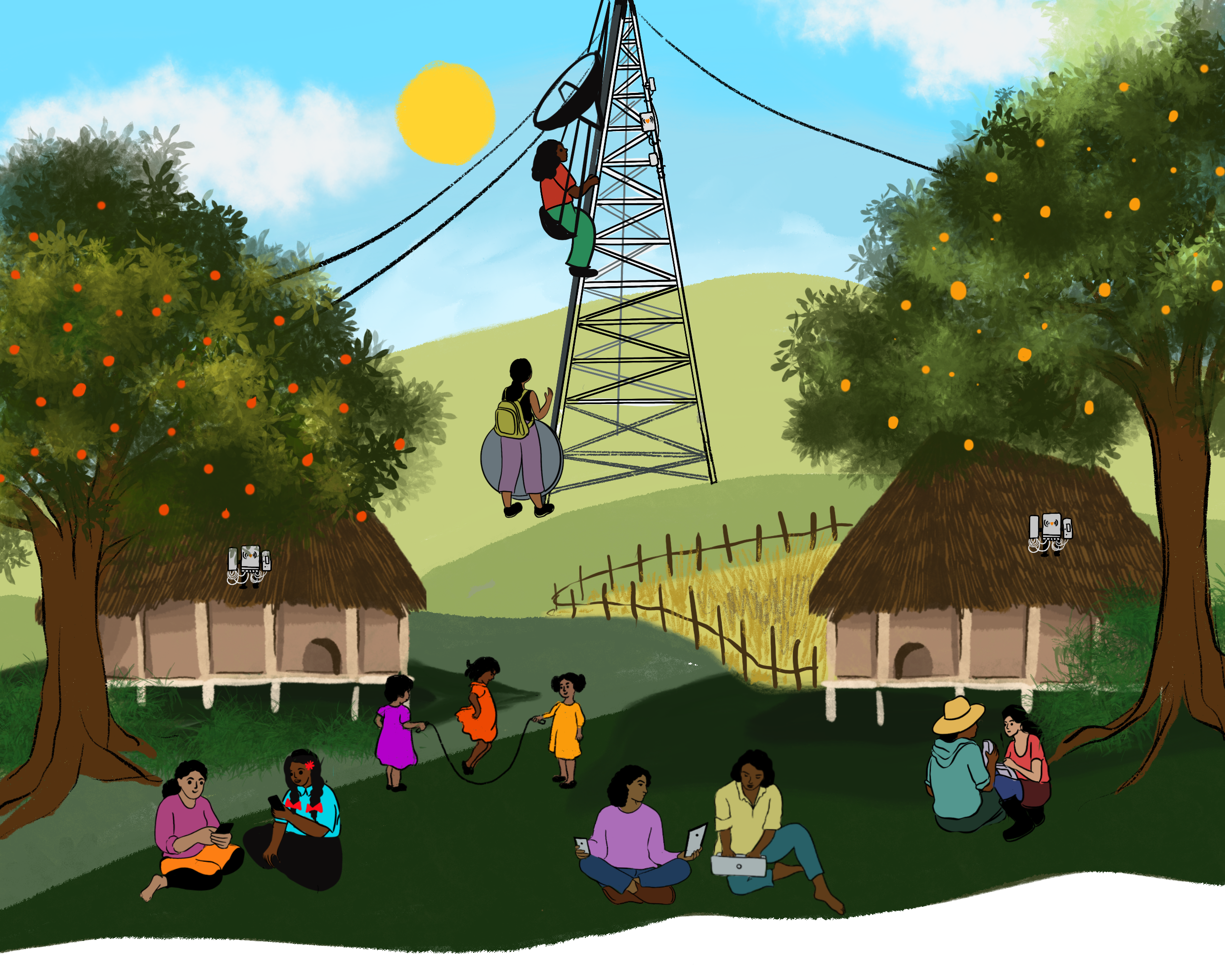
Author Hiure Queiroz and Illustrations by Vidushi Yadav
What are Community Networks?
There are many examples of communities coming together to solve a common problem. Imagine a community that does not have access to water in their homes, but in some surrounding region they can collect water from a source, to be used by the whole community. Imagine people coming together to acquire the infrastructure (water tank, pipes, connections, etc…) and then organize themselves to build this common supply system, a community water supply system.
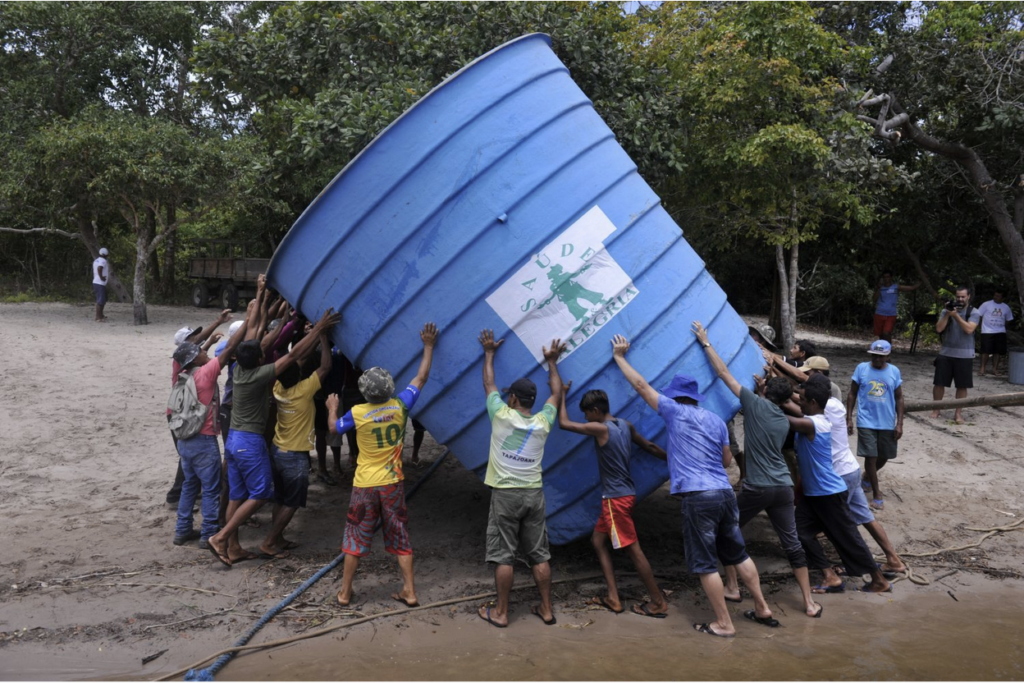
In the same way, if a community does not have internet, telephony or lack any other type of communication, people can organize themselves to solve this problem through a community communication infrastructure, which is what we call a Community Network.
But just like a water supply system, it’s not an easy task from an organizational point of view, a community network is even less so. A water system has a very clear objective, which is to provide access to water for community members.
A community network can have different objectives, which are designed according to the wishes and needs of the community. In general, a community network is intended to share a communication infrastructure, not promote profit for a person or group interested in the commercial exploitation of a service.
In general, communication infrastructure is defined as the planned and correct installation of cables and equipment necessary to use communication devices (cell phones, computers, radios, etc.). In the case of community networks, this concept is broader: in addition to cables and equipment, it is essential to consider that a communication infrastructure also includes the people who work in the maintenance of equipment and management of a network.
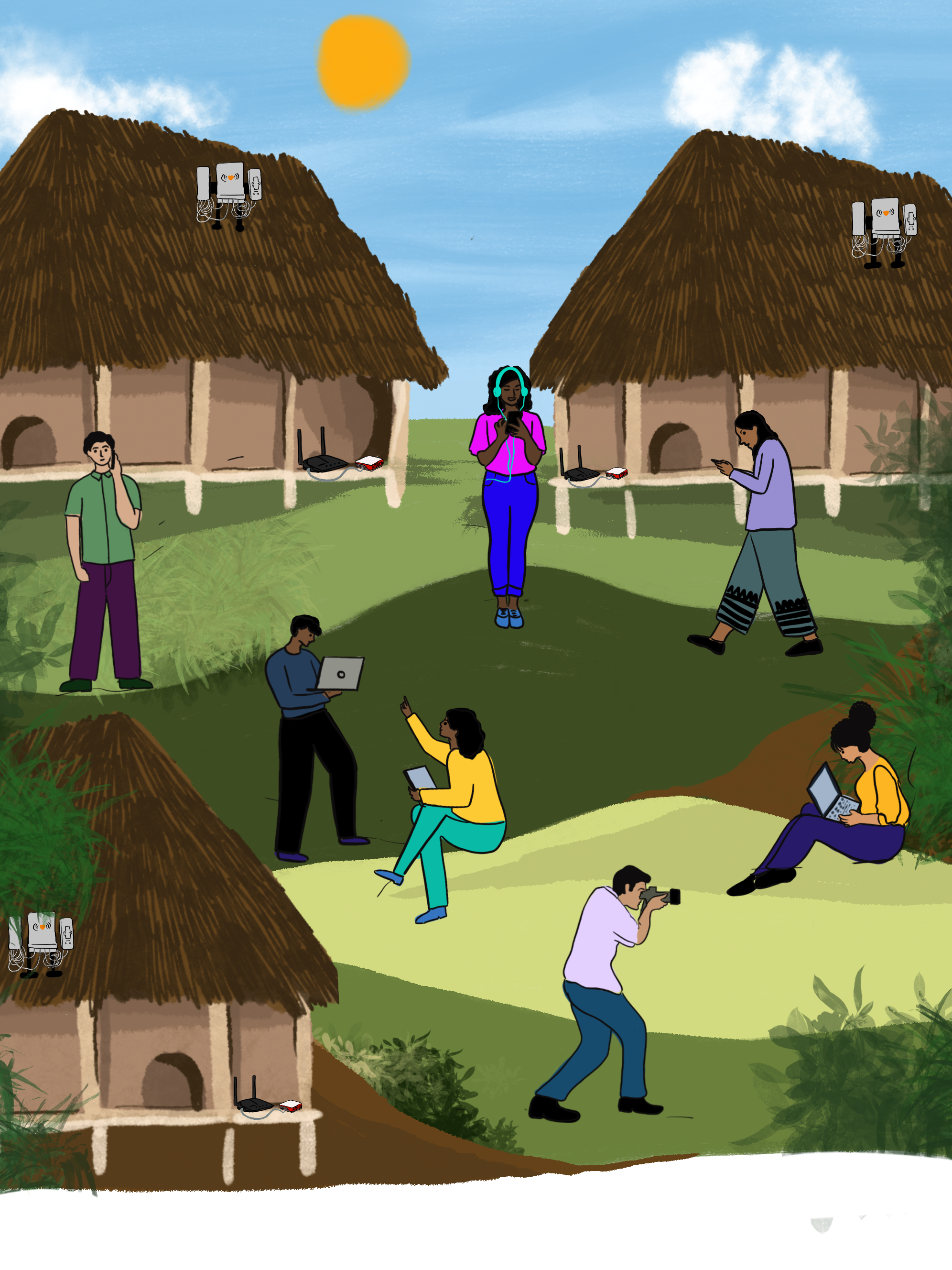
Many communities use the community network to distribute an internet connection, configuring equipment to be connected to an internet provider. Other communities prefer to use a community network not connected to the internet, using the network only to communicate locally, that is, communication made only between devices that are in the community. In most cases, a community network uses both local services and Internet services.
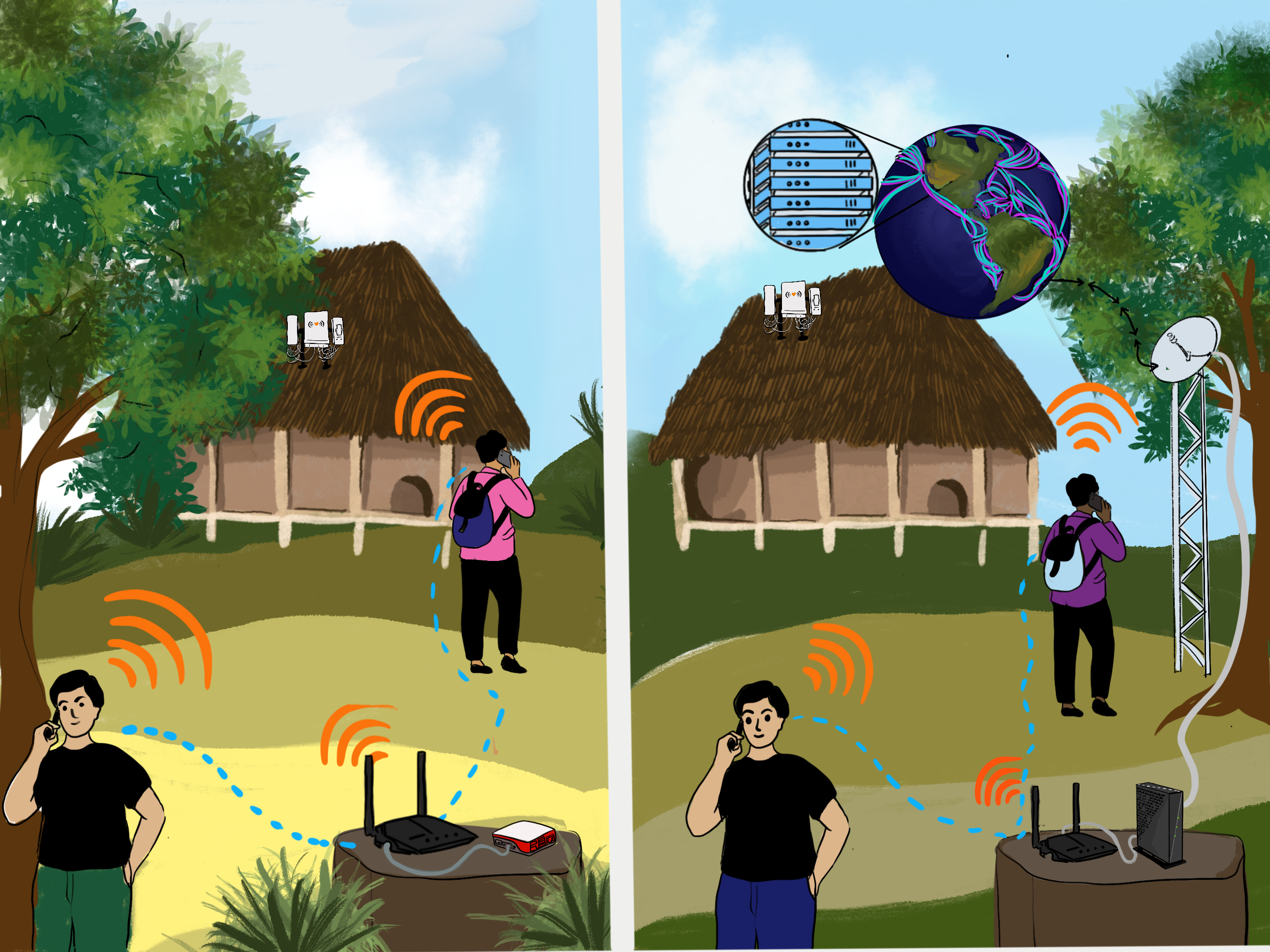
Most communication on the internet is centralized, this means that when we use a company’s application it uses a centralized model, so all information will almost always go through a server in the north of the globe before being delivered to the recipient. That is, if you send a message to a person in your community, that information will cross the ocean (if you are in the global south) to a server in the USA or Europe to then return to your community and be delivered to your neighbor, which generates unnecessary energy expenditure and can even be a surveillance tool used by those who manage data traffic. The idea of local services is that the community can share messages, videos, photos, etc... without the need for the information to go to another country and then back to those in the same neighborhood, ensuring that the data is under community control.
The business model used by telecommunication companies is based on rules and technologies where few companies own most of the infrastructure used. By following only economic interests, these companies hardly serve rural or traditional communities, since these don’t bring the financial gain that this type of model requires. In contrast, a community network is a model in which the communities themselves take care and administer the communication infrastructure, so that it can serve as a tool to solve common issues in a safer, cheaper and more efficient way.
How can a Community Networks project help communities?
- Community networks are a set of tools and methodologies for communities to have greater autonomy over the technologies that permeate them.
- The creation of a community network opens up spaces for discussions and learning about phones, computers, routers and all the equipment and languages that accompany the internet.
- Opting for a community model is also a way of being careful and respectful of the ways of life of a community, as it opens up the possibility of questioning and choosing how this technology can be applied for the benefit of common goals.
- Thus, it is possible to create mechanisms for valuing local content and apply tools designed for the local context to protect against the cultural impositions of neocolonialism.
- A community network, when managing its network, takes into account the optimizing usage of resources and stimulating the local economy.

Guiding questions to ask when considering a Community Networks project
- How to start a community network?
- What type of technology makes the most sense for community networking?
- What places and regions should have coverage of the community network signal?
- Do we want a community network connected to the internet?
- What types of local services are useful for the community network?
- How many people will connect to this community network?
- What are the legal impacts of creating a community network?
Community Networks methodology
Ingredients:
- Paper, markers and pens
- Smartphone
- Computer

Foundation
There are different ways to organize a community to start the process of building a community network. But just like building a house which starts with the foundation, a community network also needs a firm foundation to support it over time. The foundation of a community network are people who know very well what the project is about, which takes time because it is a process that goes far beyond simply turning on the equipment.
Therefore, use this material and all the references mentioned here to understand what a community network is about, what are the implications and the gains that the community could have with this process, so that later on there is a conscious and attentive group that can keep the process strong and going. That’s why it is important to have a team of people that can navigate the emerging challenges and ensure the process adapts as needed to the changing contexts.
Part of creating a strong foundation is being in contact with other community network movements around you, looking for organized groups that already have community networks to get help and learn from the processes of other communities. This will lead you to realize that many problems are recurrent and understanding how each community solved the same problems is very important to have a repertoire of strategies that can be used in your community.
Organization
A very important initial step is organizing. Different communities organize themselves in different ways, some already have their own ways of organizing themselves culturally. In such a case, the community network can and should fit into the existing organizational model that the community is used to. However, we are going to describe here a way of organization as an example and can be adapted to each reality.
Decision-making
This organizational process begins by considering that it is important to take into account that decisions are temporary, what we call “good for now”. The process can and should be reviewed at each cycle defined by the group while collectively creating new perceptions about the construction and management of this network.
This cyclical and continuous process of mutual help between people is essential to carry out collective work in an organized manner and achieve the objectives. And we can divide them as follows:
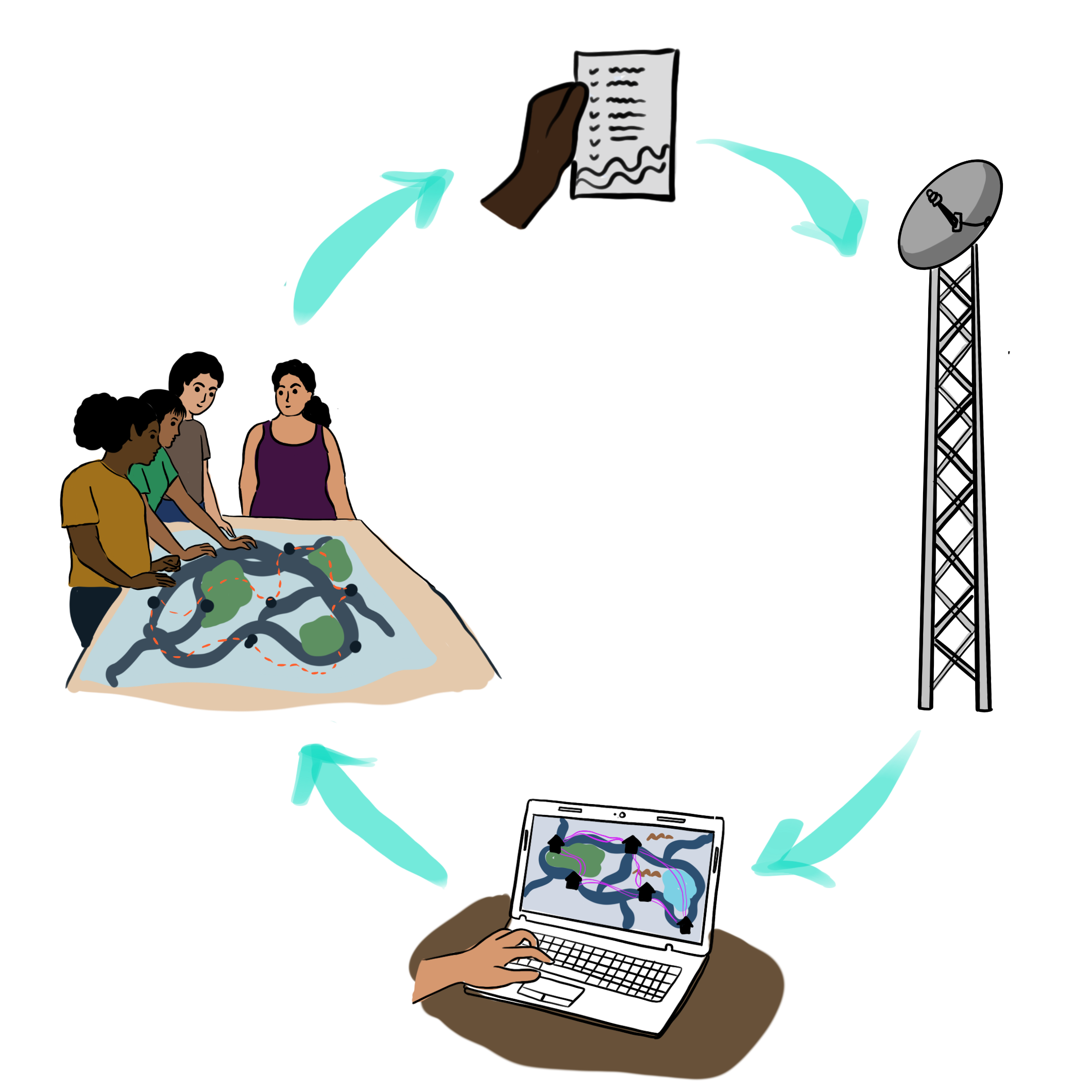
The work and organization cycles guide the implementation and maintenance of the network and must be continuous for the strengthening of the network. These cycles contribute to the network being a meeting point of collective identity.
To start planning the community network, let’s describe an example of how this can be done. Of course everything will depend on many choices that can lead to completely different paths in each community. The attempt here is to describe in general terms a way to achieve a common goal, and it is independent of the chosen technology.
Planning
Map the territory
With the help of a group interested in carrying out the community network planning process and who is familiar with the territory, prepare a clean and safe space to place a piece of paper with large dimensions, around 1mx1m or more.
In this paper draw a map of the community. Ask yourselves which are the most important places related to communication needs that can involve communal spaces and the homes of people who support the project.
Try to describe on this map everything the group thinks is important to help understand which is the best way to use this community network infrastructure.
Communication is a very powerful tool for defending the territory. If you can, map the threats on the territory, and figure out which spots are most vulnerable. They are often in remote locations, so plan to include communication infrastructure in bases where you can support the monitoring of these critical places and the safety of your community members.
Describe on the map the community’s dreams and desires with this network, for example, if they want to use a network to communicate locally or to have local services. Take into account where and how local tools, that is, where information travels locally, can be useful.
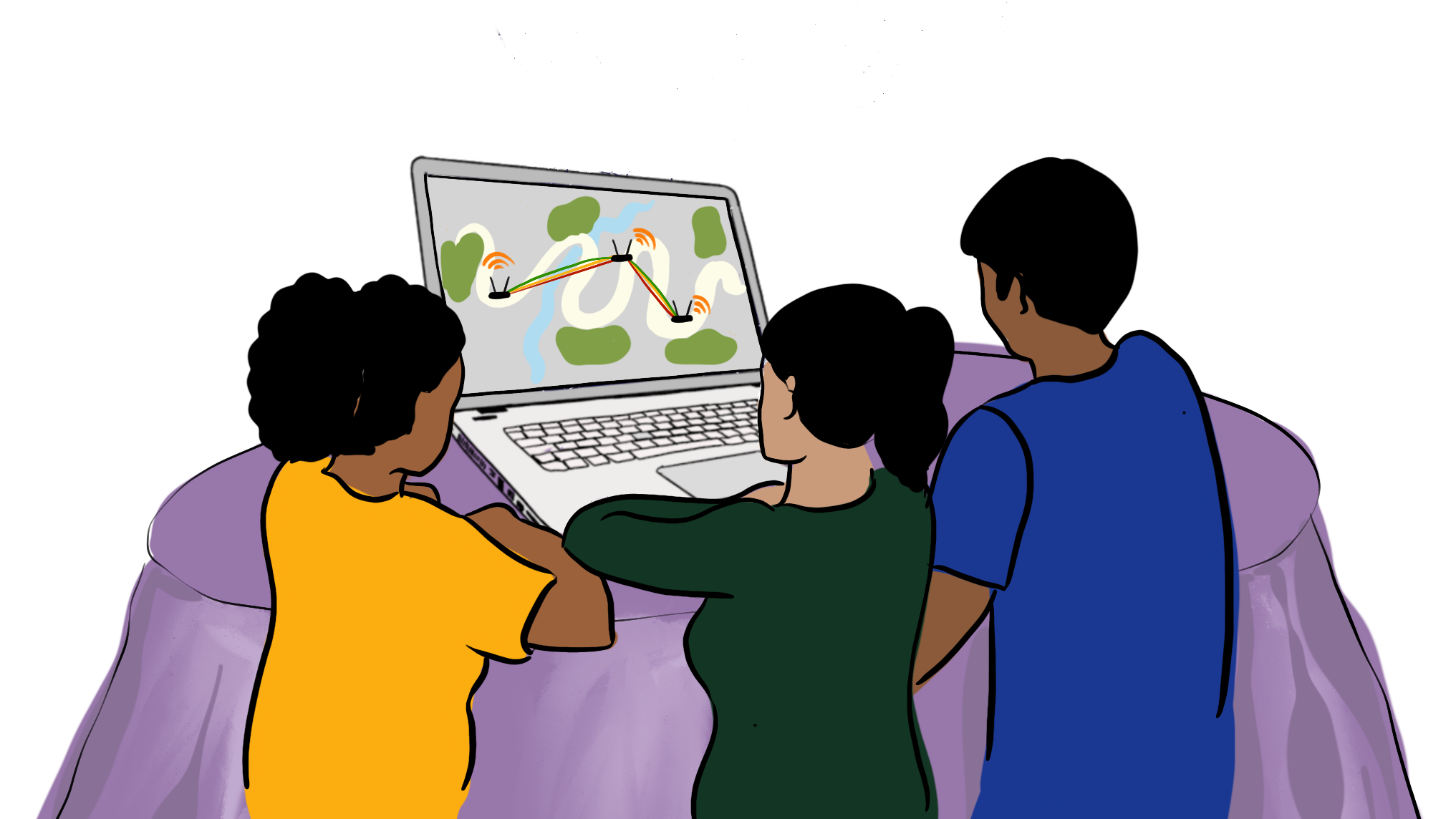
Make a preliminary digital mapping of the territory
Now walk around the territory or community and check if the survey is in accordance with reality. For that we can use a mobile app to help record the detailed data. For example let’s use the Mapeo app:
Follow the steps detailed here to make the best use of the Mapeo app.
Walk to each location mapped in the previous step and analyze the possibility of installing equipment. Take into account access to electricity, possibilities for fixing equipment, distance and whatever else you deem necessary.
Where radio equipment is placed must not have obstructions, that is, they cannot have trees, hills, or buildings that block the view between this point and other places that you want to connect. The use of masts can be of great help.

Decide on the technology
With the territory mapped and the community needs surveyed, it’s time to choose the best technology to use. For each technology we will have more specific details to follow, here you can find a guide to configure a wifi network with LibreMesh.
It is important to understand that each technology has a cost, usually wifi networks are cheaper because they use conventional and affordable equipment. But don’t limit yourself to using wifi, maybe other technologies could be more interesting for your community [Annex 2].

Survey what is needed for equipment installation in the territory
After making the decision of which technologies to use, now it’s time to go back to the field and decide where the equipment will be installed. Each technology may have some specific need, so it’s important to go back and confirm that needs are being met for the chosen locations.
Go back to the mapped points and check which locations the equipment will be installed. Assemble a list of tools and steps needed to get them properly installed safely, such as:
- how much and what types of cables will be used for this installation?
- what equipment such as masts and clamps for fastening will be needed?
- Is there electricity close to that spot? Or will it need an extension cord or even solar power?
- Does this equipment need protection from rain, natural events or children playing around them?
Take the opportunity to try to scale how many devices will be connected on average at each point according to the capacity of the technology and equipment available.
Make a spreadsheet with all the equipment and tools needed to carry out the planned installation.
Execution
Determine how community network costs will be funded
Use the worksheet of items raised above to make a survey of the costs involved in the installation. In case you need technical assistance, ask people from other community networks, or from institutions that support the creation of community networks around the world as shown in [Annex 3].
If the community is unable to finance the equipment, it is possible to seek resources from universal access funds or from institutions that financially support the creation of community networks.
Purchase equipment
A reminder that depending on the technology chosen, this step can become a very complex task, but generally it’s important that the equipment has good availability so that it can be replaced in the future. Try to stay in contact with the supplier for future needs.
Install the equipment
Install each equipment according to its characteristics. For example, radio equipment can have sectorial or omnidirectional antennas. If the equipment is sectorial, it will radiate more signal in a certain direction, whereas the omnidirectional ones will radiate the signal to all directions equally.
There are numerous differences between each type of technology, but one of the main differences is the range that the equipment signal can have and how much it can cross obstacles. For example, 3G phone networks can go further than WiFi radio signals but have a lower speed.
Determine community network terms of use and code of conduct
Like any community project, where a group will share resources, it is extremely important to create usage agreements and codes of conduct so that it is clear what you want from this network and what you do not want from it.
It is very important that these terms are turned into a document that is signed by every user of the network before starting to use. Each country has its own laws on accessing content in the digital environment, but usually everything that is prohibited in the real world is prohibited in the virtual world and if someone commits a crime using the network, the group involved ensures that they do not condone any type of crime and if a user commits a crime the responsibility is their own.
Regulate the community network
Depending on your country’s legislation, some regulation procedure for your community network may be necessary. Look for entities that assist in this process in your country or continent and then contact the regulatory agency to carry out the community network regularization process, check [Annex 3]. Remembering that the community network is non-profit and therefore this type of network must be exempt from taxes and fees that telecommunications companies are normally subject to.
Maintenance
Understand what are the basic activities for the technology that was developed in your community
For the community network to remain functioning, it is very important that the greatest number of people take ownership of the technology that has been installed in the community. The equipment will not always just work by itself, they need maintenance, as many things can happen and they’ll need to be fixed. Bringing technicians from outside the community can be very costly, so ideally the community members should know how to deal with technology.
Besides being an opportunity to gain new skills, it’s also a necessity for a community network to survive.
Understand how to ask for help
Join forums like LibreRouter (https://foro.librerouter.org), community network groups (https://communitynetwork. groups) where there are hundreds of people living in community networks and actively developing the ecosystem. They can share knowledge and help, but be brief, polite and direct to get help easier and faster.

Create a finance group
Create a spreadsheet with all installation expenses and predict what possible expenses they will have during the next months of operation, remembering that the equipment will eventually break and will need maintenance.
Try to create a cash flow that takes into account how many people will use the network. That way we can determine a cost for each user to contribute that is sufficient to pay the expenses.
Okay, with all this working, the community network can now start operating. Keep in mind that this is just one example of how a community network project can be structured. You can and should adapt to the reality of your community, and how to better serve it. Keep in mind that everything must be reviewed and modified to evolve the processes according to the changes and needs of life in the community.
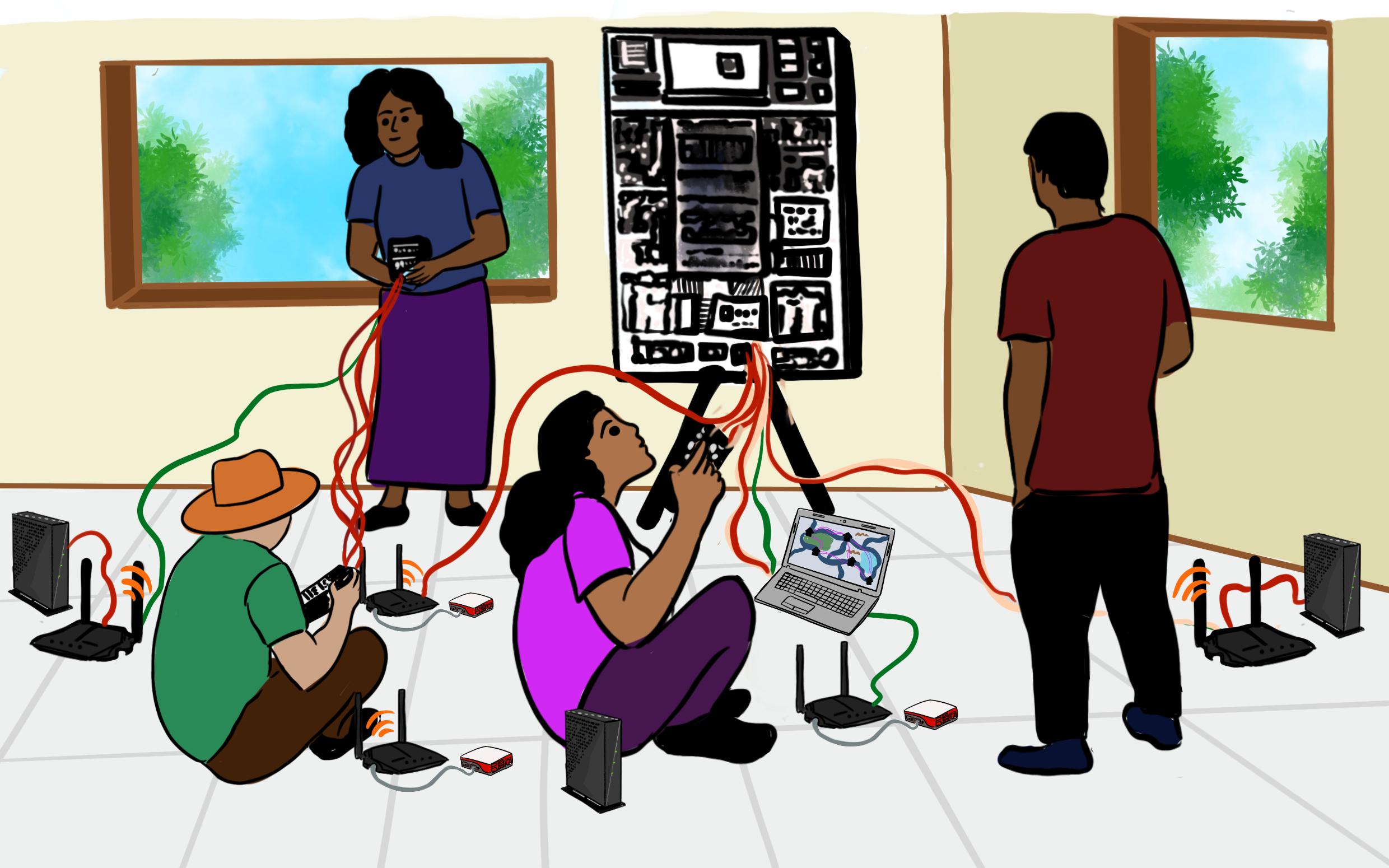
Final notes
Development and maintenance of technologies for community networks
Having the development of technologies in communities as an objective, even as a distant goal, is important because technology is always in motion and we always need to develop new things for these changes. For that reason there’s a network of community networks always willing to share and assist in the effort for development to always be up to date with the latest technology.
Thinking of development as a process within community networks does not mean that if the community does not have people who can master the knowledge necessary to develop technologies, they would not be able to have a community network. But it’s important to understand that there is development going on, and it’s important to be in contact with the communities that are using the same technologies to understand how they are doing and who is developing tools for the technology that the community is using.
Maintenance, on the other hand, is fundamental for the network to exist, so it is necessary that someone or a group in the community receive adequate training so that the network is always working. Having a community network is not just about placing equipment around the territory and expecting them to always work, a lot can happen and make them stop working, either because of a tree that grew in front of a piece of equipment or a cable that got disconnected. Therefore, it is important to understand how the maintenance of the technology in question works.
Annex 1
Extra Materials
Annex 2
Types of technology that can be used
Annex 3
Institutions that support community networks
International:
- Association for Progressive Communications
- Rhizomatica
- Internet Society
- International Telecommunication Union
Africa:
- BOSCO Uganda (Uganda)
- Centre for Information Technology and Development (CITAD) (Nigeria)
- Centre for Youth and Development (CYD) (Malawi)
- Together for Difference (Democratic Republic of Congo)
- We are going to the Institute (Kenya)
- Do it yourself (South Africa)
Asia:
- Alternative Solutions for Rural Communities (ASORCOM) (Myanmar)
- BAIF in 2020 (Gram Marg Rural Broadband in 2019) (India)
- Common Room Networks Foundation (Indonesia)
- Servelots (India)
America:
- Alter Mundi (Argentina)
- Colnodo (Colombia)
- Coolab (Brazil)
- Nupef (Brazil)
- Wellness Institute (Brazil)
- Community Indigenous Telecommunications, AC (ICT AC) (Mexico)
- Projeto Saúde e Alegria (Brazil)


